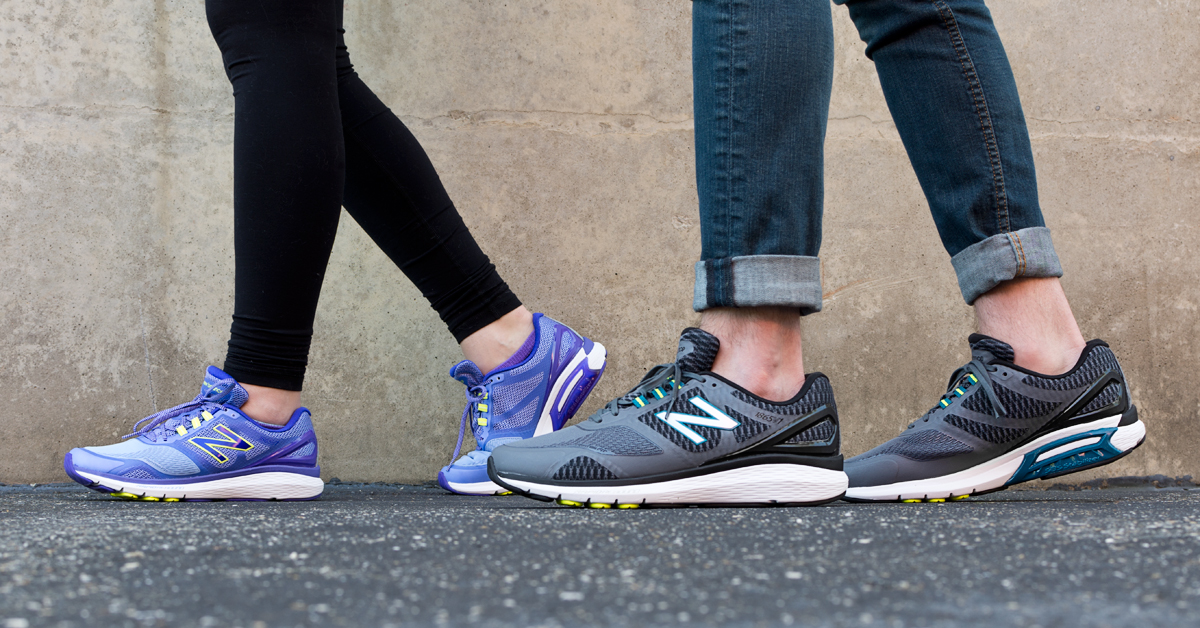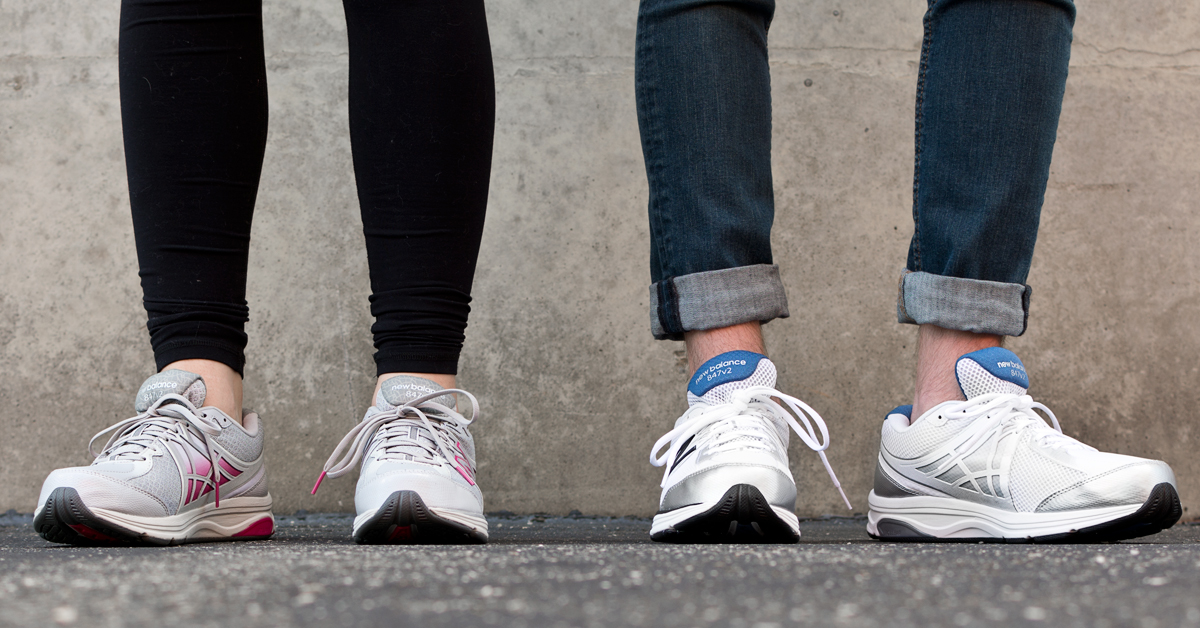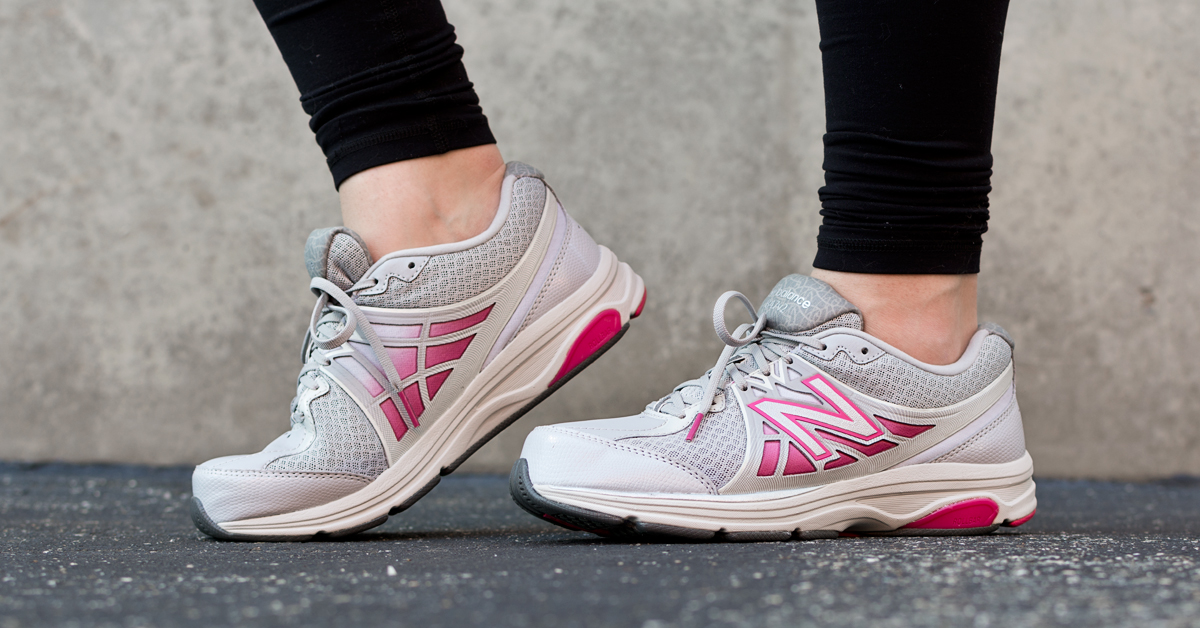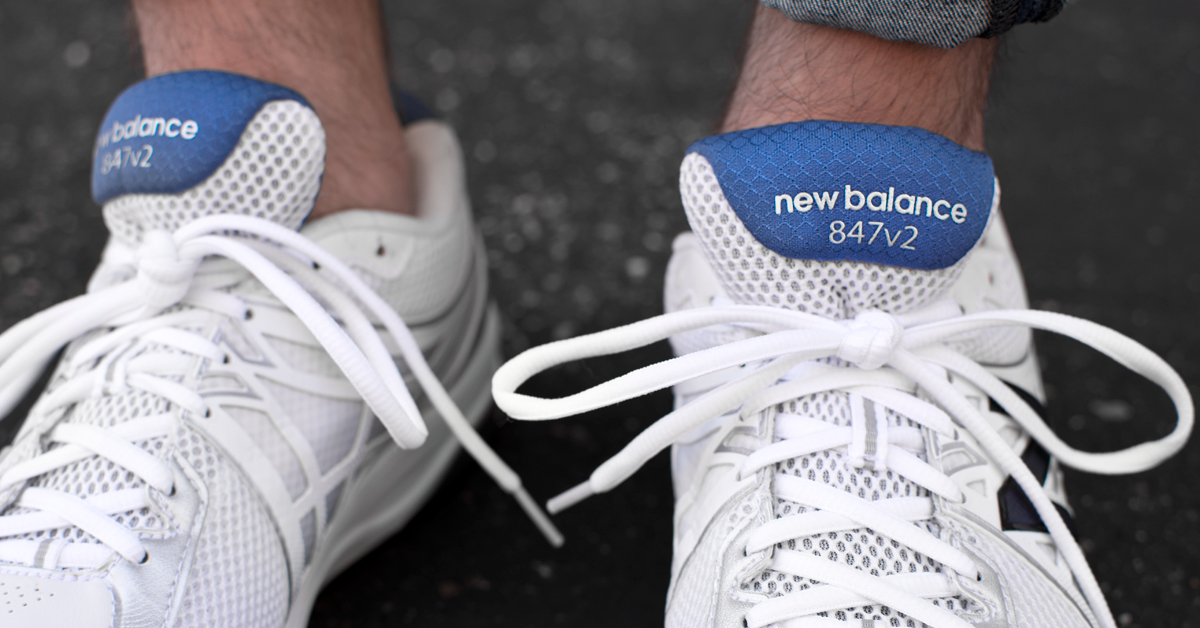Boss-man, David Hirshfeld, walked over to the marketing department cubes holding two New Balance walking shoes.
"What do you think?" he asked.
"Yasss!"
*snaps*
"I like"
"I'm into it"
—the marketing department.
"Yeah," said David, "And these walking shoes can actually be used for running."
Cue the collective: "Hmmm..."
When he left, one of our own posed the question, "Wait, what makes a walking shoe... a walking shoe? You can walk in a running shoe, but you shouldn't run in walking shoe... but why?"
"Uhhhh..."
To find the answer to our question, we looked no further than New Balance walking shoes.
So, what's the shoe sitch on our saunters and strolls?
"Basically, it's the old axiom of having the right tool for the job."

Walking shoes are designed with the specific body mechanics and strike path of walking in mind. When you walk, your weight is more evenly distributed on the foot than compared to running; so your weight rolls from the heel, through the ball of the foot and continues to the toe from one foot to the other, over and over again until you stop and smell the flowers. This gentler, "rocking-chair-like motion" is accompanied only by the force of 1-2 times your body weight with each step, requiring your feet to absorb much less shock than the 2-3 times your body weight that running generates.
"Ohhhh... so it's a force thing!"
Essentially, yeah. Think of your runs. They don't call it "pounding the pavement" for nothing, right? Right. Walking shoes have greater arch support to protect where the force is heaviest on the foot. Running shoes, in contrast to walking, have more cushioning in the heel—the point of impact—and less protection through the ball of the foot.
The amount of heat generated during running is greater, too, so running shoes also are made with a higher amount of mesh to keep feet cool during exercise.
"So that's why so many running shoes have mesh!"
YES! But some walking shoes still like to include it. Your feet can get hot in any footwear, after all! The New Balance 847V2s below include synthetic leather and mesh in their upper offering durability and breathability.

What should I know when shopping for walking shoes?
Consider your arch type when shopping for walking shoes. A fun exercise to determine your arch type is to dampen your foot and step onto a piece of paper. What does your footprint look like? If you don't see much of a footprint, you have a high arch. If it is wide, your feet are flat.
Feet with high arches may be prone to stress because of the lack of natural shock absorption. Seek shoes with cushioning to alleviate this problem.
If your feet are flat, they may not support your body well, leading to muscle and joint stress in your feet and knees. Walking shoes that are more structured will give you stability. Look for shoes with medial (inside) support to limit overpronation and support your feet.

And to know if you're in the market for a new pair of walking shoes... On average, shoes last roughly 300-500 miles, so if you walk for exercise, keep a weekly log of miles to help you understand when your shoes are ready to be replaced.
New Balance reminds us that "the best way to ensure that you will enjoy exercising is to have gear that fits right. Whether you decide walking, running, or cross-training is the best activity for you, now you can make an informed decision about the shoes that will help you achieve your goals."


